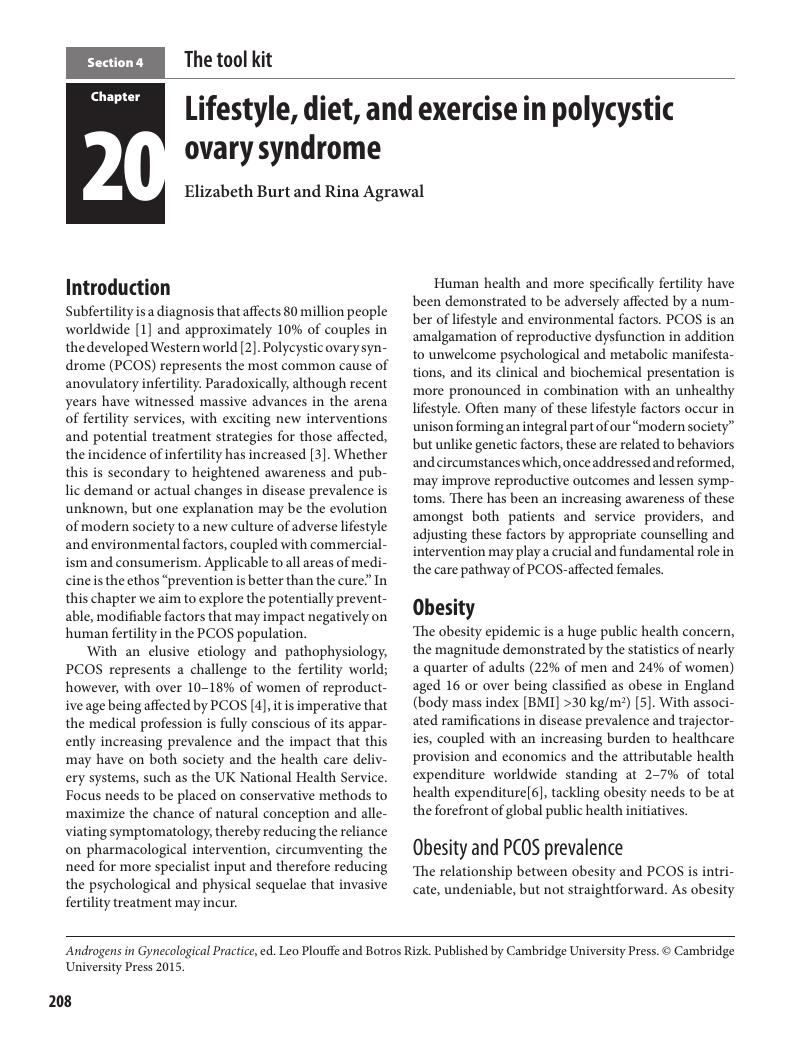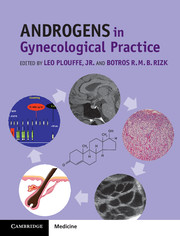Book contents
- Androgens in Gynecological Practice
- Androgens in Gynecological Practice
- Copyright page
- Contents
- About the editors
- Dedication
- Contributors
- Preface
- Section 1 Managing the basics
- Section 2 The scientific essentials
- Section 3 Learning from the extremes
- Section 4 The tool kit
- 16 History and physical examination of polycystic ovary syndrome: Detecting too much or too little
- 17 Androgen assays: of mice and men
- 18 Magnetic resonance imaging of the adrenal gland
- 19 Androgens and DHEA in postmenopausal medicine
- 20 Lifestyle, diet, and exercise in polycystic ovary syndrome
- 21 Polycystic ovary syndrome ovulation induction
- 22 Ovulation induction in women with polycystic ovary syndrome
- Index
- Plate Section
- References
20 - Lifestyle, diet, and exercise in polycystic ovary syndrome
from Section 4 - The tool kit
Published online by Cambridge University Press: 05 July 2015
- Androgens in Gynecological Practice
- Androgens in Gynecological Practice
- Copyright page
- Contents
- About the editors
- Dedication
- Contributors
- Preface
- Section 1 Managing the basics
- Section 2 The scientific essentials
- Section 3 Learning from the extremes
- Section 4 The tool kit
- 16 History and physical examination of polycystic ovary syndrome: Detecting too much or too little
- 17 Androgen assays: of mice and men
- 18 Magnetic resonance imaging of the adrenal gland
- 19 Androgens and DHEA in postmenopausal medicine
- 20 Lifestyle, diet, and exercise in polycystic ovary syndrome
- 21 Polycystic ovary syndrome ovulation induction
- 22 Ovulation induction in women with polycystic ovary syndrome
- Index
- Plate Section
- References
Summary

- Type
- Chapter
- Information
- Androgens in Gynecological Practice , pp. 208 - 215Publisher: Cambridge University PressPrint publication year: 2015



